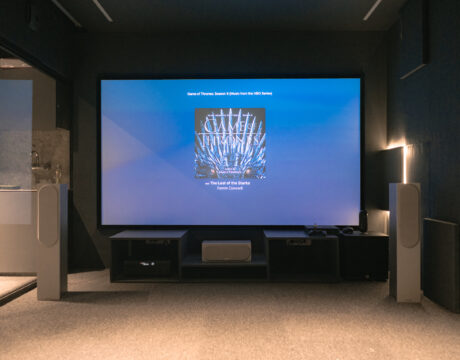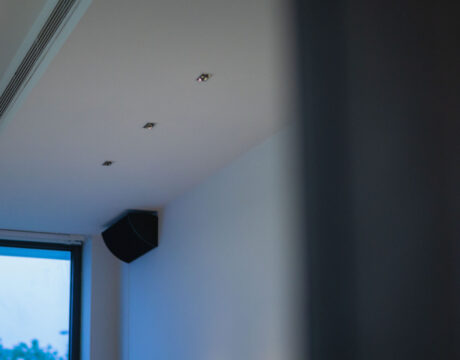Home Theater
Customize Interior
Customizing the interior for a home theater involves designing and outfitting the space to optimize the audiovisual experience while reflecting the homeowner’s style and preferences.
Implementing acoustic treatments such as sound-absorbing panels and bass traps to minimize sound reflections and echoes, thereby enhancing audio quality. Moreover, choosing comfortable seating that accommodates the desired number of viewers while providing optimal sightlines to the screen and speakers. Installing dimmable or adjustable lighting fixtures to create a theater-like ambiance and minimize glare on the screen. Selecting high-quality audio and video equipment, including projectors, screens, speakers, and amplifiers, tailored to the room’s size and acoustics. Incorporating decor elements such as themed wall treatments, curtains, carpets, and decorative lighting fixtures to enhance the immersive experience and complement the overall design aesthetic. Integrating smart home automation systems to control lighting, audio, and video components seamlessly, enhancing convenience and usability. Choosing custom-designed furniture, such as media consoles, speaker cabinets, and seating solutions, to optimize space utilization and match the room’s design theme. Adding personal touches such as movie posters, memorabilia, and artwork that reflect the homeowner’s interests and enhance the ambiance of the space.
Application Features
Comfort & Convenience






